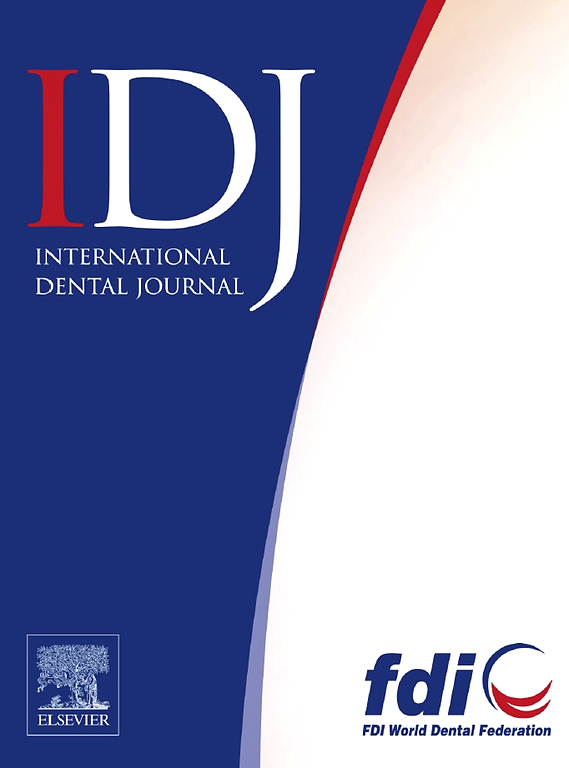Decoding Epigenetic Enhancer–Promoter Interactions in Periodontitis via Transformer-GAN: A Deep Learning Framework for Inflammatory Gene Regulation and Biomarker Discovery
IF 3.7
3区 医学
Q1 DENTISTRY, ORAL SURGERY & MEDICINE
引用次数: 0
Abstract
Background
Widespread tissue destruction and dysregulated immune responses are hallmarks of periodontitis, a chronic inflammatory disease. Although enhancer–promoter (E–P) interactions play a crucial role in gene regulation, little is known about how they affect the epigenetic regulation of periodontal inflammation. By combining DNA methylation and gene expression data using a novel deep learning framework, this study sought to decode the E–P regulatory landscape in periodontitis.
Methods
We examined matched genome-wide DNA methylation (GSE173081) and RNA-seq (GSE173078) datasets with integrated features such as methylation differences, gene expression changes, correlation metrics and genomic distances. A Transformer-GAN forecasted functional E–P interactions by training as a binary classifier to differentiate positive and negative enhancer–promoter pairs. AUC-ROC and AUC-PRC scores were used to benchmark the model’s performance, while functional enrichment and network topology analyses were employed to validate its biological relevance.
Results
The Transformer-GAN model outperformed traditional methods, exhibiting strong predictive performance (AUC-ROC = 0.725, AUC-PRC = 0.723). With a mean correlation of 0.62 and a median genomic distance of 45.2 kb, we found 262 significant E–P interactions involving 134 enhancers and 186 target genes. Multiple enhancers controlled central inflammatory genes, such as IL-1β, IL-6, IL-8 and TNF, creating network hubs enriched in immune pathways, including TNF, NF-κB and IL-17 signalling. Strong correlations were found between enhancer hypomethylation, active histone marks and gene upregulation through integrative multi-omics analysis. Interestingly, E–P interaction scores outperformed clinical indices or gene expression in terms of predicting treatment response (F1-score: 0.82). The diagnostic accuracy of the five CpG biomarkers ranged from 85% to 90%.
Conclusion
Our integrative Transformer-GAN approach reveals a complex enhancer–promoter regulatory network underlying inflammatory gene expression in periodontitis. These results reveal new biomarkers and potential treatment targets while highlighting the significance of epigenetic regulation in disease pathogenesis.
通过转化gan解码牙周炎的表观遗传增强子-启动子相互作用:炎症基因调控和生物标志物发现的深度学习框架
牙周炎是一种慢性炎症性疾病,广泛的组织破坏和免疫反应失调是其特征。尽管增强子-启动子(E-P)相互作用在基因调控中起着至关重要的作用,但人们对它们如何影响牙周炎症的表观遗传调控知之甚少。通过结合DNA甲基化和基因表达数据,使用一种新的深度学习框架,本研究试图解码牙周炎中的E-P调控景观。方法研究匹配的全基因组DNA甲基化(GSE173081)和RNA-seq (GSE173078)数据集,包括甲基化差异、基因表达变化、相关指标和基因组距离等综合特征。变压器- gan通过训练作为二元分类器来区分正负增强子-启动子对来预测功能E-P相互作用。使用AUC-ROC和AUC-PRC分数来衡量模型的性能,而使用功能富集和网络拓扑分析来验证其生物学相关性。结果变压器- gan模型优于传统方法,具有较强的预测性能(AUC-ROC = 0.725, AUC-PRC = 0.723)。平均相关系数为0.62,基因组距离中位数为45.2 kb,共发现262个显著的E-P相互作用,涉及134个增强子和186个靶基因。多种增强子控制中枢炎症基因,如IL-1β、IL-6、IL-8和TNF,形成丰富免疫通路的网络枢纽,包括TNF、NF-κB和IL-17信号传导。通过综合多组学分析发现,增强子低甲基化、活性组蛋白标记和基因上调之间存在很强的相关性。有趣的是,E-P相互作用评分在预测治疗反应方面优于临床指标或基因表达(f1评分:0.82)。5种CpG生物标志物的诊断准确率在85% ~ 90%之间。结论:我们的整合转化- gan方法揭示了牙周炎中炎症基因表达的复杂增强-启动子调控网络。这些结果揭示了新的生物标志物和潜在的治疗靶点,同时强调了表观遗传调控在疾病发病机制中的重要性。
本文章由计算机程序翻译,如有差异,请以英文原文为准。
求助全文
约1分钟内获得全文
求助全文
来源期刊

International dental journal
医学-牙科与口腔外科
CiteScore
4.80
自引率
6.10%
发文量
159
审稿时长
63 days
期刊介绍:
The International Dental Journal features peer-reviewed, scientific articles relevant to international oral health issues, as well as practical, informative articles aimed at clinicians.
 求助内容:
求助内容: 应助结果提醒方式:
应助结果提醒方式:


